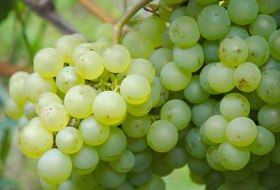It probably first occured during Medieval times in Burgundy. At the time many new vineyards were planted in a mixed culture of Pinot and Gouais Blanc, the two parent grape varieties of Auxerrois. The name is derived from the French town of Auxerre in the Bourgogne-Franche-Comté region, which also points to a French origin.
Today, the vines of Auxerrois are mainly found in France, especially in Alsace, Luxembourg and, to a lesser extent, in Germany. It was probably the Huguenots who, with their expulsion from France, brought some Auxerrois vines to their new German homeland. But only from about 1816 it was mentioned as an independent grape variety in Germany. In Rheinhessen there is currently a total of 33 hectares of Auxerrois, the majority of them in Wonnegau. In the vineyard, Auxerrois is hardly distinguishable from Pinot Blanc and also loves only the best locations with deep, fertile soil.
The usually dry white wines have a mild acidity, but are still very strong in character: the wines are elegant, reminiscent of quince, melon and mirabelle plum. They are ideal companions for fish or asparagus. In terms of taste, the yellow-green and light white wine is often compared to Pinot Blanc. An aged Auxerrois delivers aromas of honey and toasted almonds, calling for more powerful dishes or spicy cheeses as counterparts.


